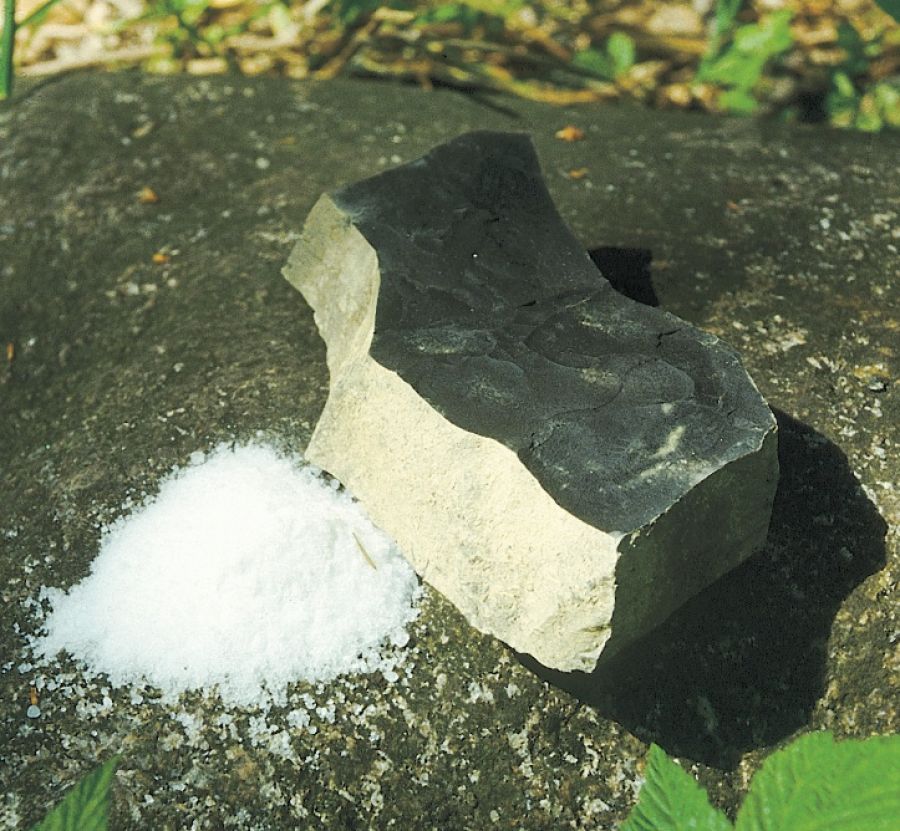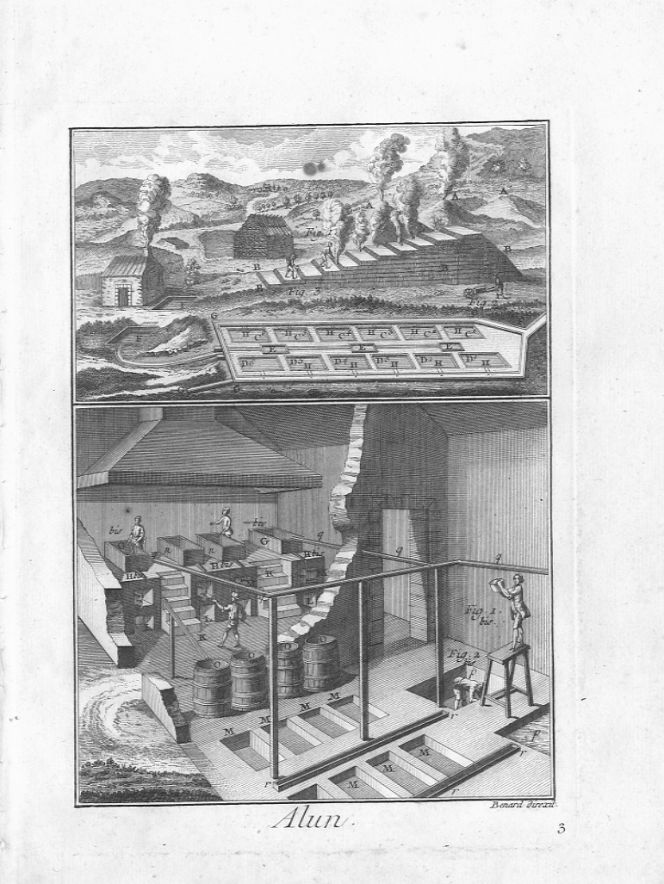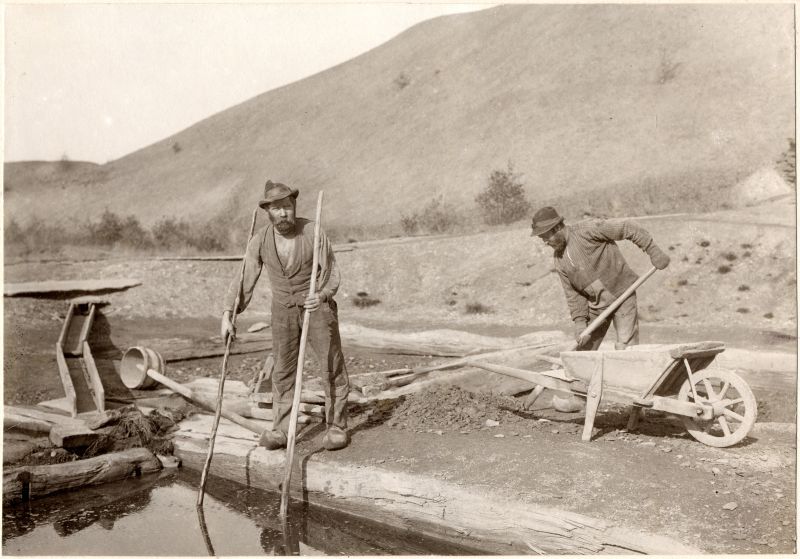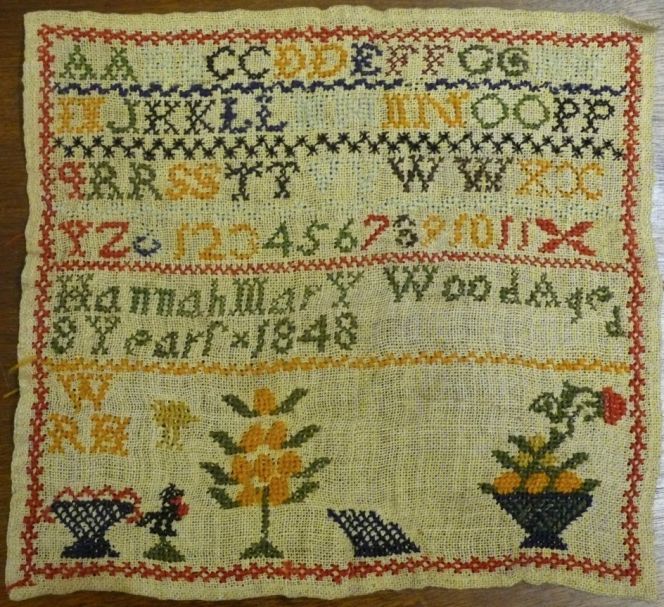ikfoundation.org
The IK Foundation
Promoting Natural & Cultural History
Since 1988


ALUM AND TEXTILE DYEING
– a Case Study of Early Industries
Alum was of universal importance for textile dyeing before the introduction of chemical dyes in the 1850s. Due to two textile history projects, I have had the possibility to study the significance of the alum quarrying and trade in several geographical areas. Foremost around Whitby in England and through Carl Linnaeus’ observations of the south Swedish alum works during the mid-18th century, but also via his long travelling Apostles’ diaries, which include notes on alum as a mordant for textile dyeing of yarn, cloth and leather in North America, China, Libya, Russia and Turkey.
 The quarrying of alum became a lucrative local business as well as a long distance trade of great importance – foremost from the early 17th century up to mid 19th century – in many places with suitable geological and geographical conditions. One of the most important areas of use was as a mordant for the dyeing of yarn and cloth. Additionally before the introduction of chemical dyes in 1856, the usage of alum was both one of the simplest and most inexpensive way to get natural dyes to fix the colour to the fibre with a satisfactory result. Here alum shale and its processed salt. Photo: The IK Foundation, London.
The quarrying of alum became a lucrative local business as well as a long distance trade of great importance – foremost from the early 17th century up to mid 19th century – in many places with suitable geological and geographical conditions. One of the most important areas of use was as a mordant for the dyeing of yarn and cloth. Additionally before the introduction of chemical dyes in 1856, the usage of alum was both one of the simplest and most inexpensive way to get natural dyes to fix the colour to the fibre with a satisfactory result. Here alum shale and its processed salt. Photo: The IK Foundation, London.The age of pre-industrialism did not only imply an increased need of alum for the dyeing of textiles, but also for a number of other necessities, like paper making, Epson salts, for pickling, glove making, baking powder and deodorant. These early industries made extensive changes to both the landscape and the people in the affected areas. For example, Andrarum’s alum works in the most southern parts of Sweden grew to become one of the earliest more significant ”industries” in Europe during the 17th and 18th centuries, with important implications for the surrounding areas. When the alum work reached its peak during the 1760s, the earlier sparsely populated area had grown to a population of nearly 1000 inhabitants. Where the workers produced 5800 barrels of alum a year (c. 140 kg/barrel), primarily exported to other European countries. For the town Whitby and nearby areas along Yorkshire’s coast in northeastern England, the changes had a similar pre-industrial growth. By the early 17th century, the town was expanding following the development of quarrying in several nearby alum works. Large ships were built in the town for the alum trade and the shipyards increased during the course of the century in both number and size, with the result that by 1700, Whitby could boast a fleet of 113 vessels.
 On the continent, in Britain as well as in the Nordic countries, alum factories through the centuries occupied hundreds of workers in this complex process. Here depicted from Liège in mid 18th century. (Diderot, Encyclopédie, vol. XXIII, 1768).
On the continent, in Britain as well as in the Nordic countries, alum factories through the centuries occupied hundreds of workers in this complex process. Here depicted from Liège in mid 18th century. (Diderot, Encyclopédie, vol. XXIII, 1768). The last alum workers at Andrarum’s alum work in Skåne, Sweden. An industry started by the Danish nobleman Jockom Beck in 1637. (Courtesy: Tekniska Museet, Stockholm. TEKA0102491, DigitaltMuseum). Photo: Alfred B. Nilsson 1910.
The last alum workers at Andrarum’s alum work in Skåne, Sweden. An industry started by the Danish nobleman Jockom Beck in 1637. (Courtesy: Tekniska Museet, Stockholm. TEKA0102491, DigitaltMuseum). Photo: Alfred B. Nilsson 1910.Even if alum was of the utmost importance as a mordant for textile dyeing of yarn and cloth – both for professional dyers and domestic needs – this salt could be added or replaced with several other mordants to deepen further, lighten or strengthen the colours of the natural dyes. Foremost, iron, potash, cream of tartar, copper sulphate and tin, also even more highly toxic elements were in use like lead and arsenic.
 This sampler from 1848 was embroidered with wool on linen fabric by an eight year old girl, it is a clear example of how a textile with a variation of colours can with certainty be dated before the introduction of chemical dyes. The majority of these colours – with exception of the indigo blue – was most probably prepared with alum as a mordant before or during the natural dyeing process. (Owner: Whitby Museum, Sampler Collection). Photo: The IK Foundation, London.
This sampler from 1848 was embroidered with wool on linen fabric by an eight year old girl, it is a clear example of how a textile with a variation of colours can with certainty be dated before the introduction of chemical dyes. The majority of these colours – with exception of the indigo blue – was most probably prepared with alum as a mordant before or during the natural dyeing process. (Owner: Whitby Museum, Sampler Collection). Photo: The IK Foundation, London.Sources:
- Hansen, Viveka, The Textile History of Whitby 1700-1914, London – Whitby 2015 (research material, pre-publishing).
- Hansen, Viveka, TEXTILIA LINNAEANA – Global 18th Century Textile Traditions & Trade, London 2017 (research material, pre-publishing).
- Singer, Charles, The Earliest Chemical Industry – An Essay in the Historical Relations of Economics & Technology illustrated from the Alum Trade, London 1948.
- Stoltz, Elof, ‘Andrarums alunbruk en försvunnen bruksbygd’, Svensk Geografisk årsbok, 1932, pp. 65-121.
Essays
The iTEXTILIS is a division of The IK Workshop Society – a global and unique forum for all those interested in Natural & Cultural History from a textile Perspective.
Open Access essays, licensed under Creative Commons and freely accessible, by Textile historian Viveka Hansen, aim to integrate her current research, printed monographs, and earlier projects dating back to the late 1980s. Some essays feature rare archive material originally published in other languages, now available in English for the first time, revealing aspects of history that were previously little known outside northern European countries. Her work also explores various topics, including the textile trade, material culture, cloth manufacturing, fashion, natural dyeing, and the intriguing world of early travelling naturalists – such as the "Linnaean network" – viewed through a global historical lens.
For regular updates and to fully utilise iTEXTILIS' features, we recommend subscribing to our newsletter, iMESSENGER.
been copied to your clipboard




– a truly European organisation since 1988
Legal issues | Forget me | and much more...
You are welcome to use the information and knowledge from
The IK Workshop Society, as long as you follow a few simple rules.
LEARN MORE & I AGREE







